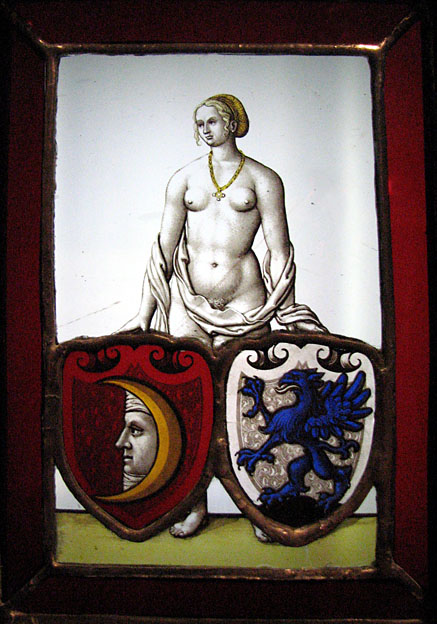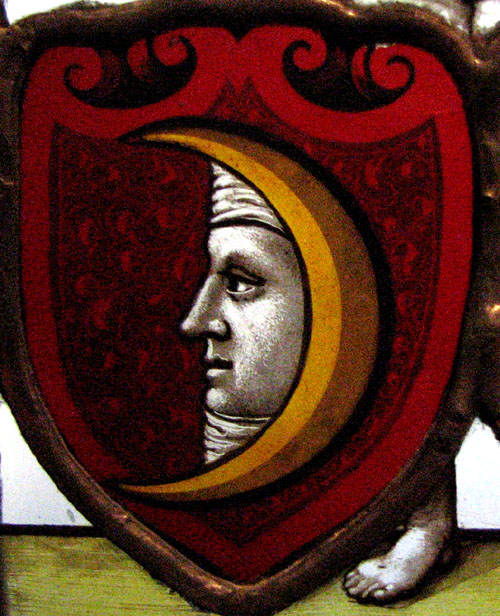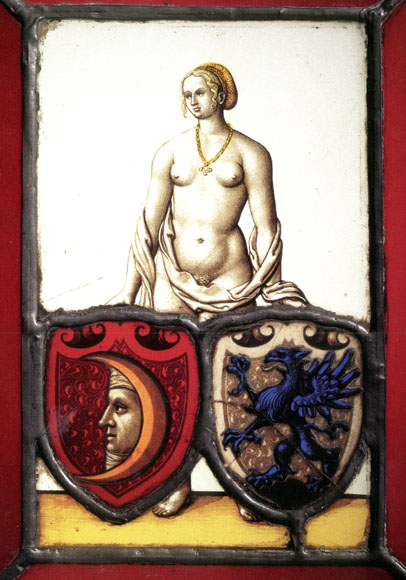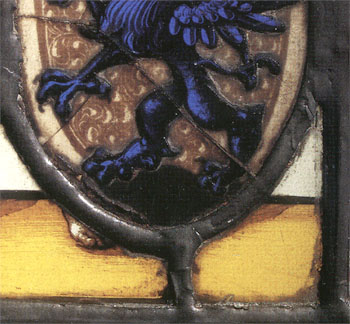November 29, 2006
Enigmatic Stained Glass at the SLAM
I saw this at the St. Louis Art Museum on the same day I saw the new Medieval Galleries. Not much solid info about it really. It comes from Nuremberg Germany, dates from about 1535 and might be by Augustin Hirschvogel. The shields are of the Ollinger and Gruner families.

This panel is striking in a number of ways. First, the size. It's really tiny. Without the border this it is only about 4 inches across and 6 inches high.
The painting is lovely, and especially amazing at that scale. The composition is unusual and enigmatic. It's suggested that it's a marriage (or family merger) panel, with the figure representing 'Fortune' and the shields representing the two families. For a figure representing 'Fortune', the expression strikes me as a bit mournful. I guess Fortune doesn't necessarily mean good fortune. I like panels that have a story to tell, and this one has a story to tell. I only wish I knew what it was.
detail of the moonface shield -

A fun and fascinating little panel to muse on.
Also of note -
This panel was featured in the book for the exhibit Painting On Light. I have the book but never saw the exhibit, alas.
I would not usually do this, but I scanned this following image from the book. I did it to point out the difference. Since the photo was made for the book there has been restoration work done on the panel. Note the lower left area. So it seems the eagle herald and the lower horizon glass piece have been edge-glued and the whole thing releaded. The new leadlines also have a warmer color to them. I assume they put a patina on them using copper sulfate. I wonder why? It almost makes it look like the relead was done in copper foil, but I find that hard to believe. I hope it's just that all the leads were tinned and they felt the warmer tone was age appropriate. I'd have to go back and give it a closer and longer look.

and the detail

[update March 2007 - I took another look at the panel and there is no question that the panel was reassembled using the copper foil method. Why? It seems like such a blatant example of a wrong conservation decision. Granted that no one in the St. Louis area except myself will notice or care about this, but still. Isn't a work of art supposed to be restored in some way close to its original state? That the material used for the leadlines be appropriate for the time the panel was made is important.]